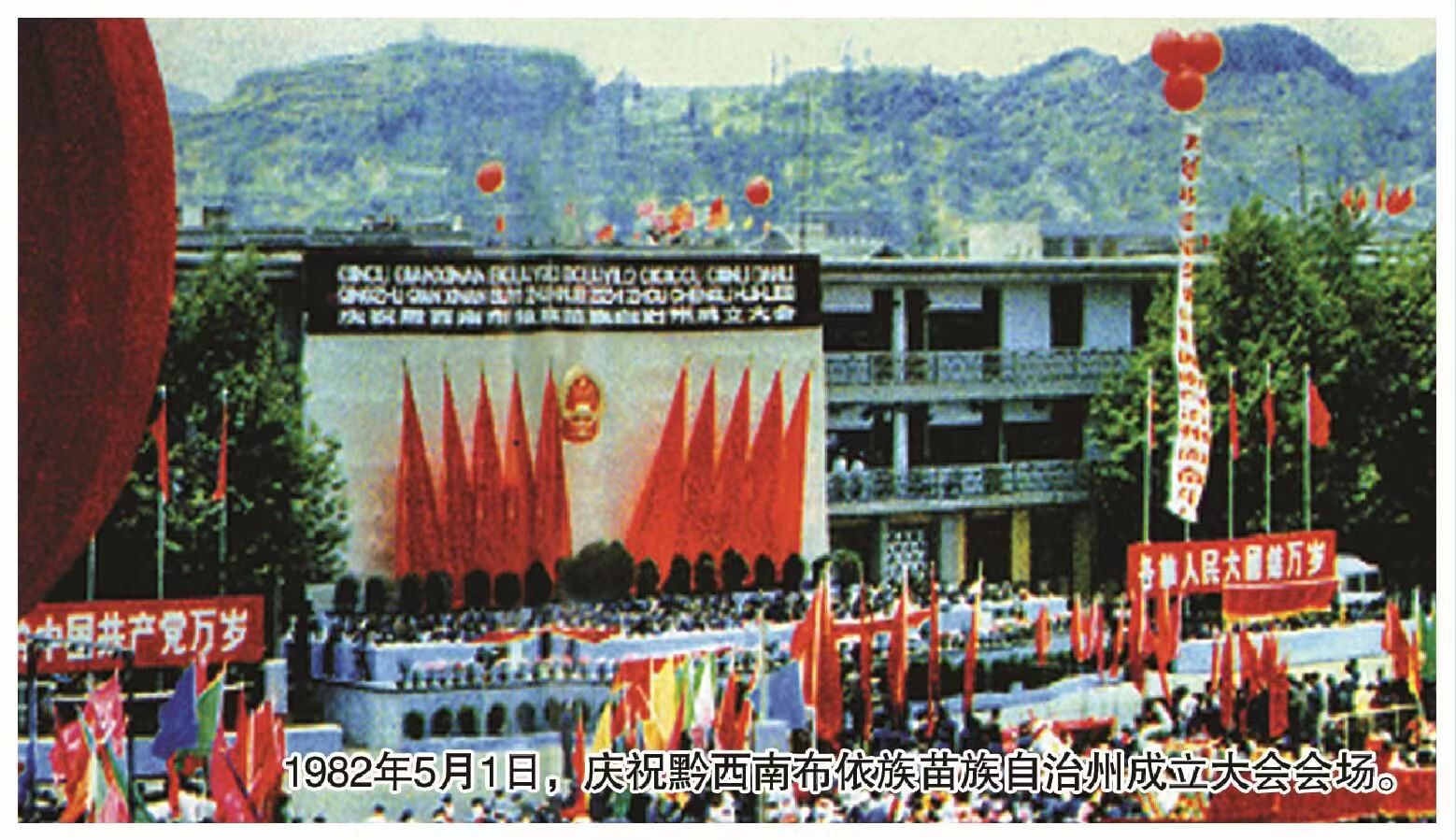Editor’s note: Use history to learn from the present and educate people. On the occasion of the successful convening of the 20th National Congress of the Party, the Guizhou Provincial Party Committee Party History Research Office and Guizhou Daily and the Guizhou Daily and Daily News jointly launched a series of reports on the Tianyan News and the “Party Building Jingwei” channel of the Contemporary Pioneer Network, further educate and guide the broad masses of party members, cadres and the masses to remember the party’s century-long struggle, strengthen their ideals and beliefs, keep in mind their original aspirations and missions, take the initiative to take responsibility, and provide continuous spiritual support for promoting the high-quality economic and social development of our province and striving to write a new chapter in the modernization of Guizhou. href=”https://funnybookish.com/”>Cinema.
Series of reports are launched today⑰:
Ethnic Regional BabaylanPractice of Autonomy in Guizhou
After the liberation of Guizhou, the Guizhou Provincial Committee and the Provincial Government of the Communist Party of China thoroughly implemented the policies, laws and regulations of the Party and the state on regional ethnic autonomy, and promoted the development of various ethnic work. In 1951, the province’s first ethnic autonomous region – Kaili Miao Autonomous Region (county-level) was established in Lushan County (now Kaili Cinema). By January 1953, five special zones were established, namely Guiyang, Zhenyuan, Anshun, Dushan and Bijie, and 27 counties including Guizhu (now Huaxi, Wudang and Baiyun), Guiding, Qingzhen and Qianxi, and the first, second and third districts of Songtao County, established the coalition government for ethnic democracy.

黔东南苗族侗族自治州第一届人民代表大会第一次会议全体代表及来宾合影(黔东南州委党史研究室供图)
1952年至In 1954, with the approval of the Government Council, the counties were successively abolished, and the Lushan, Danzhai, Taijiang and Leishan Miao Autonomous Regions were successively established, and the Huishui Yi and Miao (Buyi and Miao) Autonomous Regions, Weining County Yi and Huishui Yi and Miao Autonomous Regions, and Luodian County Buyi Autonomous Region. In 1955, with the approval of the State Council, the seven autonomous regions of Weining, Luodian, Huishui, Leishan, Komiksshan, Danzhai and Taijiang were converted into autonomous counties, and the township-level autonomous regions were converted into ethnic townships.
In April 1956, the State Council approved the abolition of the three special zones of Zhenyuan, Duyun and Guiding, and set up the Qiandongnan Miao and Dong Autonomous Prefecture and the Qiannan Buyi Miao and Miao Autonomous Prefecture. On July 23, the Miao and Dong people in southeastern Guizhou were officially established from Komiks. The administrative areas are Zhenyuan, Jianhe, Huangping, Shibing, Sansui, Cengong, Tianzhu, Jinping, Majiang, Liping, Rongjiang, 12 counties and Congjiang Cinema River and four Miao autonomous counties, Yuanlushan, Taijiang, Leishan and Danzhai, with a total of 16 counties under their jurisdiction. On August 8, Qiannanbu BabaylanYimen and Miao Autonomous Prefecture was officially established. When the Quanzhou was in charge of 14 counties, namely Babaylan, the former Huishui and Luodian autonomous counties were changed to counties accordingly. In the same year, Ziyun County was classified as the jurisdiction of Anshun Special District, and Ziyun Miao Buyi Autonomous County was established; Wangmo, Ceheng, Anlong and Zhenfeng were classified as the jurisdiction of Xingyi Special District, and three Buyi and Miao Autonomous County, Anlong, Zhenfeng and Wangmo, and CeBabaylanHengbuyi Autonomous County. In November 1956, theps://funnybookish.com/”>Cinema is sold to Songtao County Cinema and Sandu County, and set up Songtao Miao Autonomous County and SandushuiCinema was established in September 963.

The venue for the first session of the First People’s Congress of the Qiannan Buyi and Miao Autonomous Prefecture in 1956 (photo provided by Qiannan Photography Association)Komiks
In September 1981, the State Council approved the abolition of Xingyi region and Anlong, Zhenfeng, href=”https://funnybookish.com/”>BabaylanCeheng and Wangmo four autonomous counties were established, and the Qiannan Buyi and Miao Autonomous Prefecture and the Anlong, Zhenfeng, Ceheng and Wangmo four counties were established. On May 1, 1982, the Qiannan Buyi and Miao Autonomous Prefecture was officially established.
Guanling Buyi and Miao Autonomous County was established in August 1982. Yuping Dong Autonomous County was established in November 1984. In November 1987, two Gelao and Miao Autonomous County were established, including Daozhen and Wuchuan, and Yinjiang KomiksTujia and Miao Autonomous County, and Tujia Autonomous County in the river. Cinema

5, 1982KomiksOn May 1982, celebrating the venue of the founding of Qiannan Buyi and Miao Autonomous Prefecture (photo provided by Qiannan Prefecture History and Chronicles Office)
The implementation of regional ethnic autonomy has consolidated and developed equality, unity, mutual assistance and harmony among all ethnic groups. href=”https://funnybookish.com/”>Cinema‘s socialist ethnic relations have promoted the development of revolution, construction and reform in the province. (Author’s unit: Party History Research Office of Guizhou Provincial Committee of the Communist Party of China)